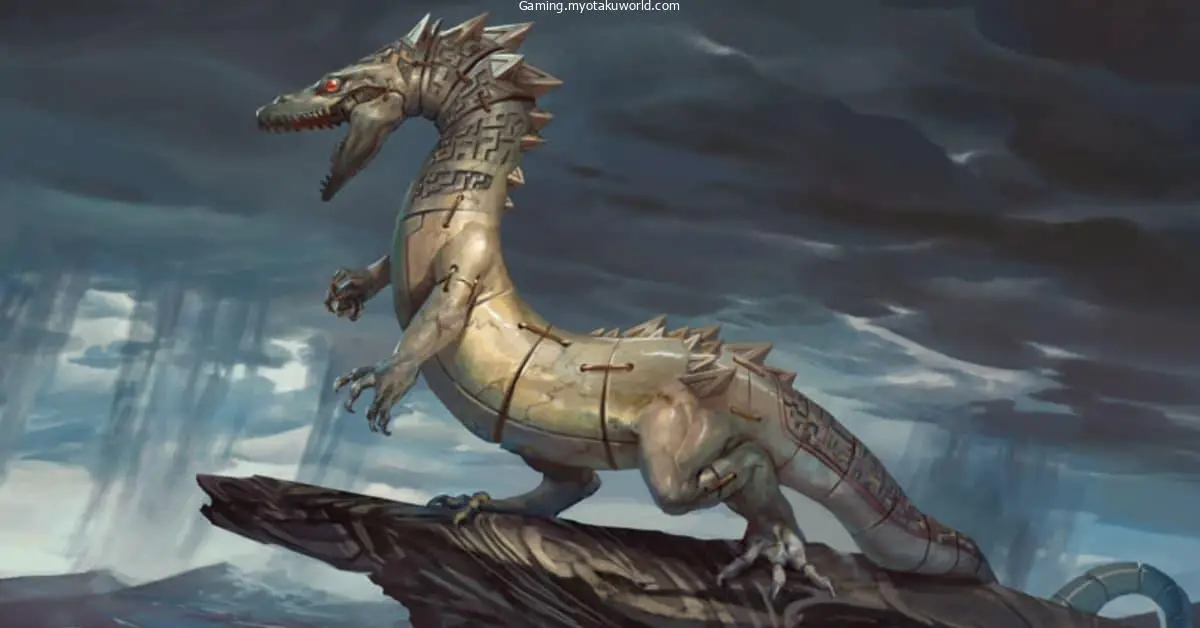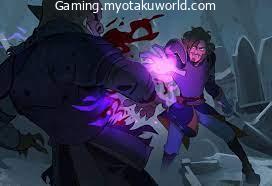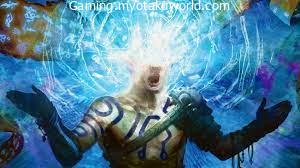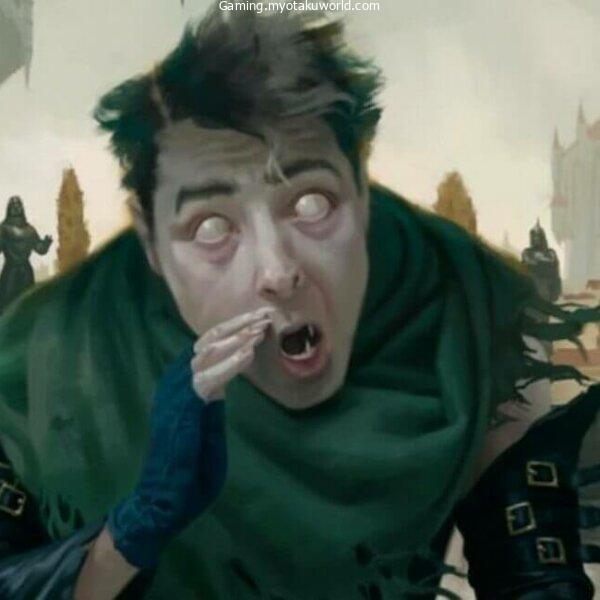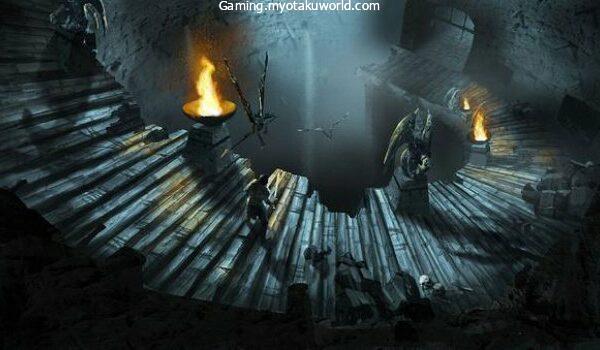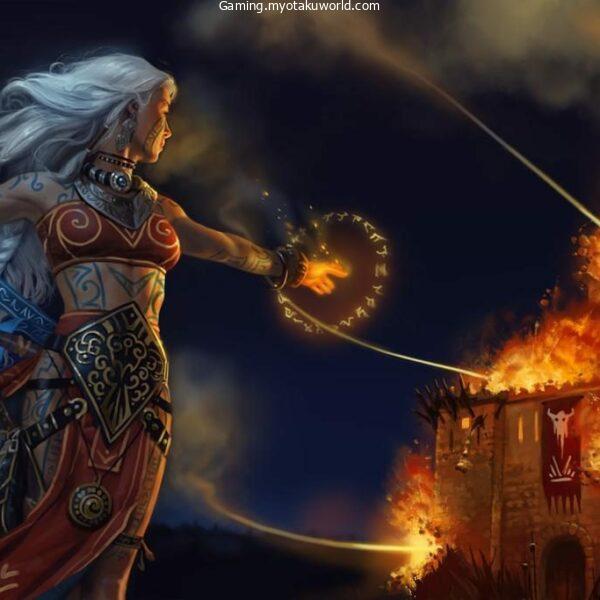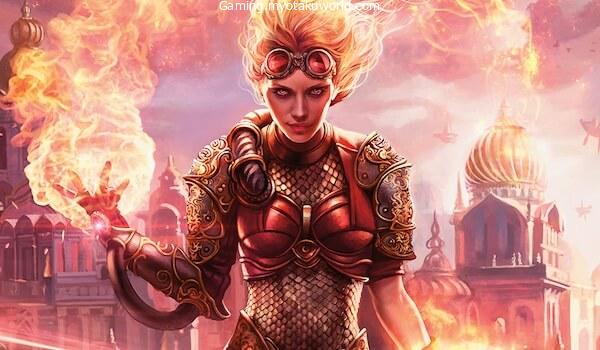The heavy stone door slams behind you as you walk into the musty room. As the statues on the walls turn toward you, you hear a rumbling sound.
As each statue steps off its platform, the sound of stone hitting stone can be heard all around the room.
Some of the most well-known classic monsters in fantasy are built. In Dungeons & Dragons 5th Edition, constructs include a wide range of creatures, from statues that can walk to clockwork automatons to weapons that can float.
But what are 5e’s constructs, exactly? What’s their purpose? How can you put them to use in your game?
Today’s post explains what constructs are and how to use them in your game. It also answers some common questions about constructs.
First, let’s talk about what the construct creature type is.
The Construct Creature Type
One of the 14 types of creatures in D&D 5e is a construct. It’s used to describe any creature that was made in a lab or one that came to life from a nonliving object that wasn’t a body or plant.
A construct is a creature that was not alive before it was made or brought to life by someone else. The line between creatures that are made, are dead, or are made from plants is thin.
But it’s easy because the undead and plants come from once-living or still-living things, not something like a chair.
…
I guess unless it’s a chair made of bones. Or, a chair made of vines that are still alive.
Anyway.
The Monster Manual talks about constructs on page 6.
“Constructs are made, not born. Some are programmed by their creators to follow a simple set of instructions, while others are imbued with sentience and capable of independent thought. Golems are the iconic constructs. Many creatures native to the outer plane of Mechanus, such as modrons, are constructs shaped from the raw material of the plane by the will of more powerful creatures.”
So, creatures like Animated Armor and the Clay Golem are considered to be made by someone else, since they were either enchanted or made by someone else.
The important thing to remember about constructs is that they are made by creatures.
Now, when it comes to the idea that inanimate objects could absorb magical energies to make a structure, I like to play around with that idea.
But at the end of the day, 5e constructs are just things that aren’t alive but are brought to life by magic or machines.
Now that you know what D&D 5e constructs are, let’s look at some of the things they all have in common.
D&D 5e Construct Traits

Constructions are very different from one another. So, their qualities vary depending on why they were made and what materials were used. Still, they have some things in common.
The most obvious thing that all 5e constructs have in common is that they are made of non-living, inorganic matter.
When you realize that a piece of ensorcelling wooden furniture is actually a form of plant necromancy, things get a little more complicated. So, I think you shouldn’t think about it too much.
At the end of the day, every construct in D&D is a non-living thing that another creature “brings to life.”
Constructs also have some of the same resistances to damage and healing spells. But the way they are built, what they are used for, and what they can do depend on the type of construct they are.
They can be made of stone, wood, or metal. They can be as big as a 40-foot statue of a great hero or as small as a housecat.
They may help their creator out around their lair by being an extra set of hands, or they may be a guardian who fights off intruders.
So, the traits of the 5e constructs are as different from one another as those of almost any other creature.
Construct Immunities in 5e

Often, a number of damage or conditions can’t hurt a construct. Since they are not made of living things, poisons and charm spell usually don’t hurt them.
Poison is a type of damage that is meant to hurt living things. So, it has no effect on constructs because they don’t have the same bad effects when they eat or are around poison.
By extension, this means that most constructs also don’t get poisoned.
Now, a lot of constructions can also not be hurt by psychic damage. Like poison, psychic damage only really hurts creatures that can think. Some constructs can still take psychic damage, but most of them don’t.
While we’re talking about this, many spells and abilities that try to charm don’t work on constructs. Most of the time, they don’t have free will or mind, so abilities that give the Charmed or Frightened condition don’t work on them.
In fact, many of the conditions in D&D 5e, like being tired, paralyzed, or petrified, don’t affect constructs. Some do, like the Homunculus, but those creations are usually lower on the scale of Challenge Rating.
Healing Constructs
Most spells that heal don’t work on constructs in 5e.
That’s all there is to it. Almost every healing spell in D&D 5e says, “This spell does not work on constructs or undead.”
Still, some spells that restore hit points do work on constructs because they don’t say that they won’t. Some of these spells are:
Aid is more of a backdoor way to fix something. You’re not really helping them get better. Rather, you’re adding five to both their current hit points and their maximum hit points. If a construct’s health is low, you are technically healing it.
It does two different things. You start by healing 4d8+15 hit points. Second, any limbs that are cut off grow back. It’s interesting that this spell doesn’t say that it can’t be used on a construct. So, that healing worth 4d8+15 works on them.
Now, if you want to know how to heal constructs in 5e, you can use some other gear that doesn’t involve spells.
First of all, a regular Potion of Healing. It only says that a person who drinks it will get better. So, the effects of the good hit point juice are felt by any constructs that drink it.
The Healer’s Kit and the Healer feat come next. Now, I can’t talk about the Healer feat in too much detail because it’s not in the SRD. But you can still use a Healer’s Kit to heal an animal. The best thing about it is that it doesn’t say that it won’t work on constructs.
Lastly, in 5e, healing a construct might be part of a tool’s Ability Check. Now, this is up to your DM at the table to decide.
I would let a player fix any damage by making Smith’s, Tinker’s, or Woodcarver’s Tools, depending on the materials used to make the build. But that depends on how your game’s DM runs it.
Spells That Affect Constructs in 5e
Except for healing spells, most spells in the 5e effect construct the same way they affect any other creature.
The most important thing to remember is that many constructs can’t be hurt by poison or psychic damage. If a spell does any of these kinds of damage to a construct, or any other kind of damage, it won’t do anything.
Same with spells that heal. They won’t work at all (for the most part).
Now, what about spells like “dispel magic” that get rid of the effects of magic?
Well, that depends on the build and your DM.
Some structures say exactly what will happen if a spell like this hits them. For example, if dispel magic is used against the Flying Sword, it must pass a Constitution check. It can’t do anything when it’s in a place where the antimagic field spell is in effect.
On the other hand, the Flesh Golem doesn’t say anything about how these spells change it.
So, it’s really up to your DM to decide how spells affect things you build (or you if you are the DM).
Also, as we’ve already said, charm spells usually have no effect on constructs.
Aside from these special cases, spells work the same way on constructs as they do on other creatures.
How to Create Constructs in 5e
In D&D 5e, there aren’t many clear rules about how to build creatures. Usually, the DM is the one who decides what goes into the process. But some creatures only give hints about how they came to be.
Now, the fact that there are no rules for making constructs may seem like a big problem. But I think it’s a huge plus. It means that “well, that’s not how it works in the book” can’t stop you. When explaining where a construct came from, you can do anything you want.
You can make it as easy or hard as you want to.
Now, I will say that some things are easier to build than others. For example, a Flying Sword is just a normal sword that is affected by the animate objects’ spell in a way that lasts longer.
On the other hand, this lets you make more complicated things like the Shield Guardian or the Homunculus. Most likely, these creatures should have more complicated rituals and building standards.
Now, I’ll say that the different magic items from the Manual of Golems are in the Dungeon Master’s Guide. Each kind of golem (clay, flesh, iron, and stone) has its own manual that tells you how long and how much gold you need to make it. They don’t go into detail about how each golem is made. They do, however, let people make their own golems.
Outside of these, you can do whatever you want with how your game’s structures are made.
Using Constructs in Your Game
In 5e, constructs are great side creatures. Whether they are friends or foes, they often pretend to be the villain’s minions or the guardians of ruins.
The easiest way to use constructs in a D&D 5e game is to have them work for a bigger bad guy. Since they are made, your bad guy could make a small group of obedient robots or even a whole army of them. No matter what, they’re great enemies that the party shouldn’t have to think too hard about killing (as opposed to a living creature).
Even so, what if you want a machine to be the bad guy?
Well, I’d suggest either a machine that gains consciousness and turns on the world (like Ultron in the Marvel movies and comics) or a machine that builds its own army of robots.
Or, a sentient superstructure that broke into pieces and spread them all over the world. Each piece planned its way back to the body and gave life to other things.
When it comes to allies, adding a Shield Guardian as a servant for an artificer or a Homunculus as a familiar for a mage gives your NPCs some interesting character notes.
Or, if you want to think bigger, maybe there is a whole society whose main job is to make magical and mechanical tools.
Constructs are easy to use in your D&D 5e game because you can make them as simple or complicated as you want. In your world, there are no limits on what kinds of things can be built.
Here are five ideas for encounters and plot hooks that use 5e constructs:
- The bad guy wakes up in an old building that was only ever meant to make a huge army of robots.
- When the person who made it disappeared, the Shield Guardian went on a rampage across the countryside.
- Bodies keep going missing from graveyards and cemeteries in the area. At some point, stitched horrors (also called “Flesh Golems”) start showing up in towns all over the county.
- During their journey, the group comes across a Homunculus. It was sent by its master with a message, but it got lost on the way.
- The party is paid to clean out a dungeon that is full of furniture, armor, and weapons that move on their own.
Constructs in 5e by CR
Here’s a list of the constructs found in D&D 5e’s Basic Rules.
- CR 0
- Homunculus
- Homunculus Servant
- Improved Steel Defender
- Steel Defender
- CR 1/8
- Vox Seeker
- CR 1/4
- Flying Sword
- CR 1
- Animated Armor
- CR 2
- Rug of Smothering
- CR 5
- Flesh Golem
- CR 7
- Shield Guardian
- CR 9
- Clay Golem
- CR 10
- Stone Golem
- CR 16
- Iron Golem
FAQs
Is a Construct a Humanoid in 5e?
No, in 5e, constructs are not people. “Construct” and “humanoid” are both types of creatures in their own right.
What Language Do Constructs Speak in D&D 5e?
Most things that are built don’t have a language. When creatures are made, they usually speak the same language as the person who made them. Still, some constructs, like the Modrons in the Monster Manual, do have their own language.
How Tall Are Constructs in 5e?
The sizes of structures vary a lot. They range from very small to very big. So, you can make your builds as tall as you want.
Are Warforged Constructs in 5e?
No, in 5e, Warforged is not made of anything. This player race comes from Eberron: Rising from the Last War, where they are humanoid creatures.
Are Golems Constructs?
Yes. In D&D 5e, golems are considered constructs.
Final Words
That’s about it for D&D 5e’s constructs.
They are pretty much any walking, non-living creature that isn’t a plant or a zombie. Because of this, they look, are made, and are used very differently.
But they all have some things in common, like not being hurt by poison or psychic effects.
